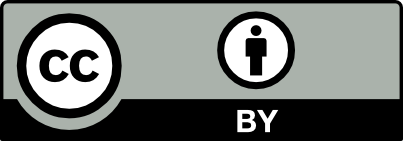Checking for non-preferred file/folder path names (may take a long time depending on the number of files/folders) ...
This resource contains some files/folders that have non-preferred characters in their name. Show non-conforming files/folders.
This resource contains content types with files that need to be updated to match with metadata changes. Show content type files that need updating.
Supporting data and tools for "Simulating Community Water Use Behavior and Potential Water Conservation Using Detailed End Use Event Data"
| Authors: |
|
|
|---|---|---|
| Owners: |
|
This resource does not have an owner who is an active HydroShare user. Contact CUAHSI (help@cuahsi.org) for information on this resource. |
| Type: | Resource | |
| Storage: | The size of this resource is 51.8 MB | |
| Created: | Oct 12, 2021 at 6:52 p.m. (UTC) | |
| Last updated: | Jun 27, 2022 at 6:02 p.m. (UTC) | |
| Citation: | See how to cite this resource |
| Sharing Status: | Public |
|---|---|
| Views: | 2503 |
| Downloads: | 31 |
| +1 Votes: | Be the first one to this. |
| Comments: | No comments (yet) |
Abstract
The files provided here are the supporting data and code files for the analyses presented in "Simulating Community Water Use Behavior And Potential Water Conservation Using Detailed End Use Event Data" a manuscript submitted for publication. The resource contains standardized monthly water use data for single family residences (SFR) in the city of Logan, UT, USA and the detailed water end use events from the 2016 Residential End Uses of Water Study (REUWS) collected by AquaCraft, Inc. used as inputs to the case study simulation described in the paper. The code included in this resource demonstrates a new model of indoor residential water use that estimates water demand and conservation potential by end use for a target community by simulating indoor water end use events at a household level. The model uses end use event data from a set of representative residential households (selected from the REUWS dataset for our case study) to simulate a larger community and advances existing end use models by: 1) accounting for an expanded set of indoor water end uses; 2) considering the variability in flowrates, durations, and volumes for end use events over different days of the week; and 3) providing a generalized approach for simulating indoor water usage and potential conservation at the city level. The results of this paper are reproducible using the openly available code and data provided in this resource, representing an accessible platform for advancing water demand modeling using detailed water end use data.
Subject Keywords
Coverage
Spatial
Temporal
| Start Date: | |
|---|---|
| End Date: |
Content
readme.md
Files in this resource are organized as follows:
1. CIWS_Demand_Model.ipynb: contains the indoor end use model used to generate the results in the paper.
2. other_Models.csv: contains the variables used in OLS, Piecewise, and Multiple regression models as well the computed coefficients of these variables used to predict the daily water use volume.
3. REU2016_Main_Meter_Event.csv: contains the detailed water end use events from the 2016 Residential End Uses of Water Study (REUWS) collected by AquaCraft, Inc.
4. Summary.csv: contains the daily water use volumes of homes from the 2016 Residential End Uses of Water Study (REUWS) collected by AquaCraft, Inc.
5. winter_Data.csv: contains the standardized monthly water use data for single family residences (SFR) in the city of Logan for winter months.
Instructions for reproducing results
Complete the following steps to reproduce the classified events results presented in the article:
-
Download the complete resource.
-
Leave the files together in the folders to ensure the paths to the files remain correct.
-
Open the CIWS_Demand_Model.ipynb Jupyter Notebook and execute it.
-
The Output of the tool is a .csv file named simulated_Households.csv that contains the daily water use volumes for residential users in Logan City. The Python Juypter Notebook can also be used to reproduce all plots presented in the results section of the paper.
NOTE: You can also run the notebook in this resource by clicking the “Open with” button at the top of this landing page and selecting “CUAHSI JupyterHub”. This will launch the notebook and associated data files into the CUAHSI JupyterHub environment for execution. You should select the appropriate Python environment for running the Python-based Jupyter notebook.
Required code libraries
The Python code provided in this resource was developed using Python 3.7.3. The following Python packages are required for running the provided scripts:
- pandas - Version 1.2.3.
- matplotlib - Version 3.0.3.
- seaborn - Version 0.9.0.
- numpy - Version 1.20.3.
- scipy - Version 1.2-1.
- random - Version 3.10-4.
Credits
Funding Agencies
This resource was created using funding from the following sources:
| Agency Name | Award Title | Award Number |
|---|---|---|
| National Science Foundation | CAREER: Cyberinfrastructure for Intelligent Water Supply (CIWS): Shrinking Big Data for Sustainable Urban Water | 1552444 |
| Utah Water Research Laboratory |
How to Cite
This resource is shared under the Creative Commons Attribution CC BY.
http://creativecommons.org/licenses/by/4.0/

Comments
There are currently no comments
New Comment